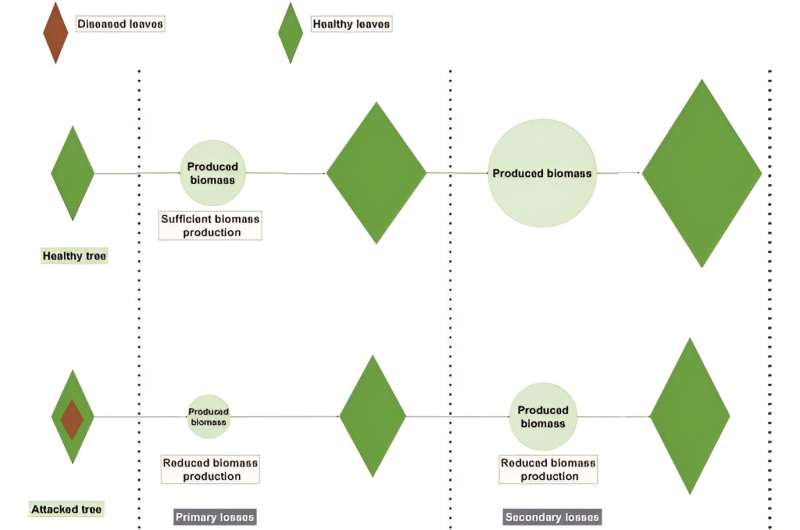This article has been reviewed according to Science X's editorial process and policies. Editors have highlighted the following attributes while ensuring the content's credibility:
fact-checked
trusted source
proofread
Agroecological research: A software tool for advanced plant growth, pest and disease modeling

Agroecological transition, particularly in modeling agronomical systems, stands as a burgeoning research area with a focus on assessing intricate interactions within environmental systems. However, this field faces challenges in integrating models from diverse disciplines, each with its unique methodologies and frameworks.
Current research highlights the need for improved model couplings that consider the dynamic interplay between various environmental processes and their mutual impacts, particularly in the environmental domain of plant production.
A critical issue lies in the integration of models that account for the effects of pest and disease (P&D) on plant growth and yield, especially over the long term. Traditional approaches often overlook the feedback effects of P&D on plant biomass and growth, underscoring the necessity for dynamic, mechanistic models at the organ level.
In August 2023, Plant Phenomics published a database/software article titled "Coupling plant growth models and pest & disease models: an interaction structure proposal, MIMIC."
This paper aims to develop a robust coupling framework that effectively integrates plant growth dynamics with P&D impacts, facilitating more accurate long-term predictions and treatment decisions in agricultural production, particularly in the context of changing climate conditions and the resurgence of P&Ds in crops like coffee.
In this study, a software tool called MIMIC was developed to integrate models into an interaction structure through a three-layer architecture. The first layer encompasses independent models connected to MIMIC via the second layer, comprising pseudo-models that act as wrappers for these models. The third layer, MIMIC's kernel, is responsible for scheduling, task management, and data exchanges.
The operation of MIMIC involves independent models exchanging data with the platform, the automatic generation of pseudo-models for simulation and interaction, and the kernel layer managing processes and storing data.
Results corresponding to this method demonstrated MIMIC's efficacy in facilitating complex model interactions. In the models' layer, data exchange between MIMIC and external models was streamlined. Pseudo-models in the second layer provided simulation data and managed interactions between models and MIMIC's kernel. The kernel layer's components, including CS, ISS, and ISDR, ensured dynamic scheduling, data storage, and state variable conversion.
Users interacted with MIMIC through a user layer, writing interaction codes in Julia language and defining simulation controls via YAML files. MIMIC's design allowed for efficient model coupling, as illustrated in a case study involving coffee tree fructification and a Coffee Berry Borer (CBB) model.
This study shows MIMIC's ability to accurately simulate pest attack dynamics on coffee trees, with some minor discrepancies attributed to initial conditions and system sensitivity.
In terms of performance, MIMIC showcased a compact and linear complexity code, with most simulation time spent in initialization due to Julia's compiling process. The tool, developed in Julia, was user-friendly and accessible, particularly beneficial for scientists and engineers in the agricultural and environmental sectors.
MIMIC's modular structure allowed easy integration of additional components, making it a versatile and generic framework suitable for a wide range of applications. The successful case study from Sumatra, Indonesia, highlights MIMIC's potential in assessing the long-term effects of P&D on plants by simulating interactions between different models.
More information: Houssem E. M. Triki et al, Coupling Plant Growth Models and Pest and Disease Models: An Interaction Structure Proposal, MIMIC, Plant Phenomics (2023). DOI: 10.34133/plantphenomics.0077
Provided by NanJing Agricultural University




















